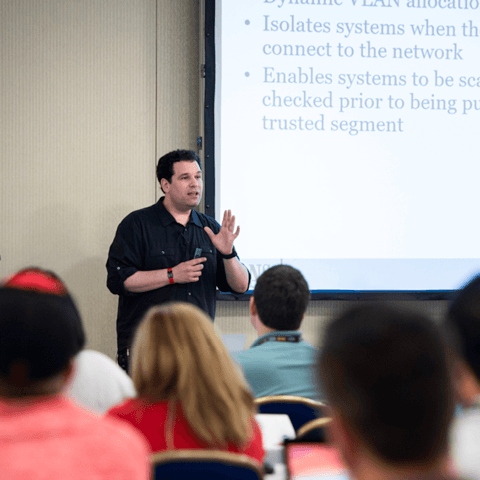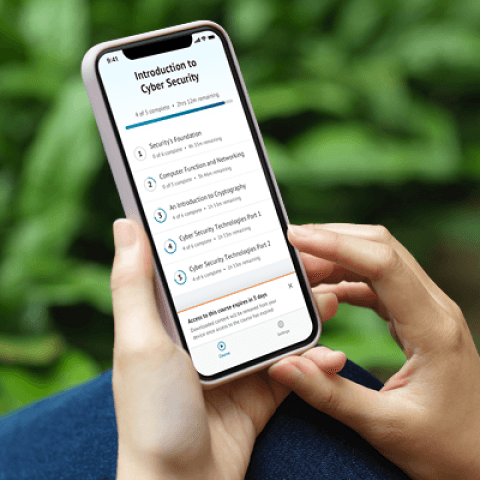SEC595: Applied Data Science and AI/Machine Learning for Cybersecurity Professionals


Experience SANS training through course previews.
Learn MoreLet us help.
Contact usBecome a member for instant access to our free resources.
Sign UpWe're here to help.
Contact Us
Apply your credits to renew your certifications
Attend a live, instructor-led class at a location near you or remotely, or train on your time over 4 months
Course material is geared for cyber security professionals with hands-on experience
Apply what you learn with hands-on exercises and labs
Learn how to investigate cybercrime from end to end — uncover attacker tactics, trace financial activity, and analyze digital evidence to support attribution and incident response.
In the many years I’ve been doing this, I’ve taken lots of cybersecurity courses, created them, and taught them. This course is different than any cyber related course I’ve ever taken. They showed me things I had not even thought about, and I’ve been doing this for a long time.
Today’s dynamic cybercrime ecosystem continuously lowers the barriers for novice criminals to collaborate with more sophisticated actors. FOR589 Cybercrime Investigations offers a comprehensive exploration of the cybercrime underground, detailing a broad spectrum of tactics and techniques used by cybercriminals to target organizations. This cybercrime training course includes over twenty hands-on labs and a final capstone exercise, equipping analysts with the skills necessary to enhance their organization's defenses, proactively gather critical intelligence, trace cryptocurrency proceeds linked to crime, and generate actionable insights.


Conan Beach has transformed cybercrime investigations by pioneering undercover operations targeting dark web markets, cryptocurrency laundering, and ransomware syndicates, leading to landmark indictments and the dismantling of illicit networks.
Read more about Conan Beach

Sean O’Connor is a cybersecurity professional with over 15 years of experience in intelligence, digital forensics, and threat analysis across both the private and public sectors.
Read more about Sean O'Connor

Will has revolutionized cyber threat intelligence by co-founding Curated Intelligence and exposing ransomware operations like Black Basta. His expertise in infiltrating dark web communities has advanced how we dismantle cybercriminal networks.
Read more about Will ThomasExplore the course syllabus below to view the full range of topics covered in FOR589: Cybercrime Intelligence.
This section covers the intelligence lifecycle in cybercrime investigations, emphasizing structured methods for threat profiling, persona management, and secure data collection from underground sources. Students will learn to turn fragmented data into actionable intelligence to support investigations and strategic decisions.
This section teaches students to trace illicit cryptocurrency activity using blockchain analytics and attribution techniques. Through real-world case studies, students will learn to follow laundering tactics, cluster wallets, and use OSINT and off-chain data to link transactions to threat actors, aiding in investigations and asset recovery.
In this section, students learn how to safely navigate and investigate cybercriminal communities across surface, deep, and dark web environments. Uncover how forums, leak sites, messaging platforms, and infrastructure tie together into a functional underground economy—and how adversaries interact to buy, sell, and monetize access, data, and capabilities.
In this section, students will learn how to infiltrate gated criminal communities, build credible personas, and collect human intelligence (HUMINT) directly from threat actors. You’ll explore both manual and automated approaches to collecting data, from eliciting adversaries through social engineering to scraping dark web content at scale.
The final day of FOR589 is a capstone challenge that focuses on launching an investigation. Students engage in a fun and meaningful exercise that brings together various components of the entire course. The capstone will reinforce the principles taught via a simulated scenario that enables students to practice implementing their newly learned skills.
Collect, process, analyse data and information to produce actionable intelligence reports and disseminate them to target stakeholders.
Explore learning pathResponsible for identifying and assessing the capabilities and activities of cybersecurity insider threats; produces findings to help initialize and support law enforcement and counterintelligence activities and investigations.
Explore learning pathThis role collects and analyzes information about threats, searches for undetected threats and provides actionable insights to support cybersecurity decision-making. Find the SANS courses that map to the Threat Management SCyWF Work Role.
Explore learning pathResponsible for analyzing digital evidence from computer security incidents to derive useful information in support of system and network vulnerability mitigation.
Explore learning pathThis expert applies digital forensic skills to a plethora of media that encompasses an investigation. If investigating computer crime excites you, and you want to make a career of recovering file systems that have been hacked, damaged or used in a crime, this may be the path for you. In this position, you will assist in the forensic examinations of computers and media from a variety of sources, in view of developing forensically sound evidence.
Explore learning pathWhen purchasing a live, instructor-led course, add 4 months of online access. View price in the info icons below.
Add 6 months of hands-on skills practice. Add to your cart when purchasing your course.
Love the instructor so far. He has excellent background and experience to pull into the content.
FOR589 was truly engaging. It was well-structured and thoughtfully designed, featuring excellent exercises and detailed materials with a wealth of additional information and resources. I highly recommend it.
Keep creating new SANS classes like this!

Get feedback from the world’s best cybersecurity experts and instructors

Choose how you want to learn - online, on demand, or at our live in-person training events

Get access to our range of industry-leading courses and resources